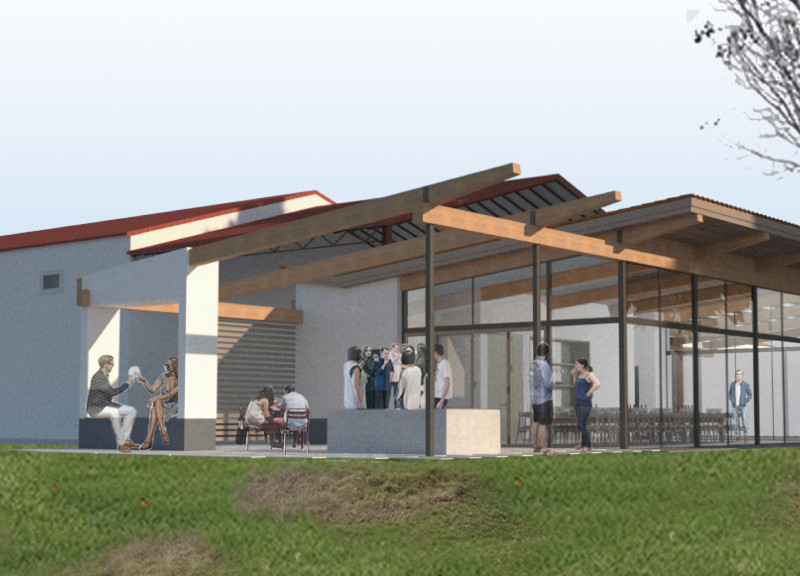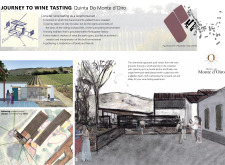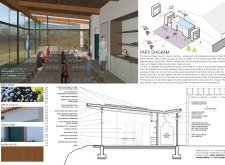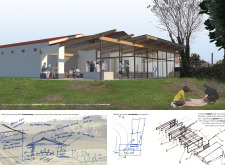5 key facts about this project
The primary function of the project is to facilitate wine tasting and related activities, allowing visitors to enjoy and engage with the environment. This is achieved through a central gathering area that features a family-style table, reinforcing a sense of community and shared experience. The design promotes flexibility in circulation and space utilization, enabling the venue to accommodate a variety of events and group sizes.
Unique Design Approaches
A critical aspect of the design is its spatial organization, which fosters interaction while maintaining a connection to the vineyard. The entry sequence invites visitors into a carefully articulated space that culminates at a glass-encased central area, providing panoramic views of the landscape. The operable glass walls enhance this interaction, creating a seamless transition between indoor and outdoor environments.
In pursuit of sustainability, the project incorporates various eco-friendly features, such as photovoltaic panels and rainwater collection systems. These components illustrate a commitment to environmental stewardship while ensuring energy efficiency. The use of natural materials, including white stucco and wood, creates a warm and inviting atmosphere that reflects the local architecture and landscape.
Innovative elements further distinguish Quinta Do Monte d'Oiro from similar projects. The central family-style table not only serves as a functional piece of furniture but also embodies the idea of communal dining, encouraging conversation and connection among guests. This design approach emphasizes the importance of relationships and experiences in the wine tasting process.
Architectural Plans and Ideas
The architectural plans reveal a careful consideration of both aesthetics and function, guiding the layout and detailing of various spaces within the project. Architecturally, the strategic alignment of views is prominent, ensuring that visitors can appreciate the surrounding vineyard throughout their experience. The materials selected for construction contribute to the overall design narrative, highlighting a deep respect for tradition while embracing modern design principles.
In summary, Quinta Do Monte d'Oiro is a well-conceived project that captures the essence of community and tradition in the context of wine tasting. By exploring the architectural designs, sections, and plans in detail, one can gain deeper insights into the cohesive approach taken in this project. Interested readers are encouraged to delve into the project's presentation for a more comprehensive understanding of the architectural ideas and innovations that define this venue.


























